Paradigm shift: Boots and boats steer once bitten, twice shy flood town through Alfred
This time on the cataclysm roundabout, things were very different in Lismore; with emergency services, officials and battle-hardened residents ready when Alfred called.
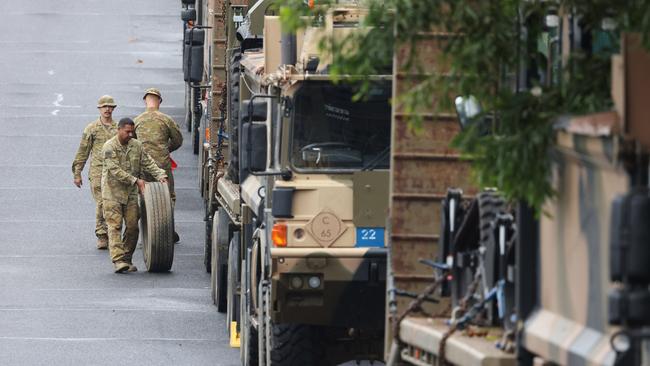
As Tropical Cyclone Alfred lifted its lethal skirts this week from the battered river township of Lismore in far northern NSW, a time-honoured and oft-repeated demographic shift occurred.
A flotilla of camouflaged Australian Defence Force troop carriers crawled out of town, up Ballina Road and over the eastern ridge of the giant primordial volcanic caldera that surrounds the town, along with a small army of State Emergency Service workers towing their swift water rescue craft, and fire trucks and all manner of rescue vehicles and personnel going back to their home bases.
And coming in the opposite direction, returning to the flood plain now that the emergency was largely over, were local residents and business owners and workers and every other type of Lismorian, going back once more to a place that sadly has become, in recent times, synonymous with natural disaster.
Back they trudged to their habitat like a colony of long-suffering ants, their nest stirred again when all they’ve ever wanted was peace and harmony.
It had been a mad week and a half, the town electrified, frightened, trepidatious and on guard, having suffered the great and devastating floods of 2022, a biblical-style deluge that took four lives, affected thousands of residents and submerged the Lismore CBD under 2m of water.
The town and many of its shell-shocked residents have yet to fully recover. Ample evidence of that flood – piles of refuse, abandoned and fenced-off houses, businesses boarded up with buckled sheets of pine – remains.
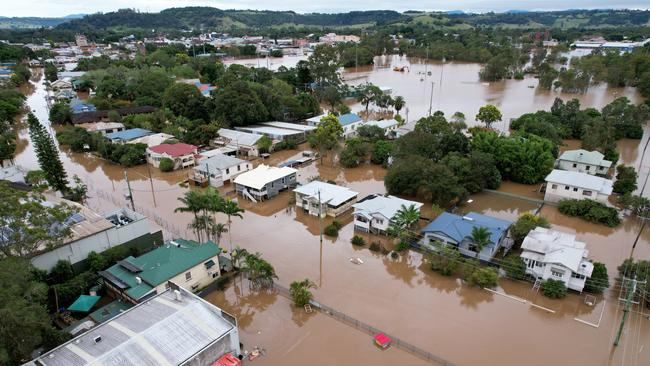
Now the tendrils of Tropical Cyclone Alfred were set to enter the caldera precisely three years to the day since those transformative floods.
An entire community sighed heavily and thought one thing – here we go again.
“Time and time again we know realistically what happens here and all we can do is be prepared if we want to stay,” local artist Kate Stroud tells Inquirer. “But it does honestly feel a little bit like an abusive relationship – how many times can we do this and still choose to be here?”

This time, however, the paradigm shifted. This time, government officials, from the Prime Minister to federal and state parliamentarians to local mayors and councillors, were present, prepared and communicative. In fact, they reverted to type – they didn’t stop talking – which, in this instance, as the ever-broadening white spiral of Alfred inched towards the coast, was not a bad thing at all.
This time battered and bruised locals had flood plans, clear lines of communication with emergency services and each other, bags packed, businesses insulated or fortified with sandbags or totally packed up in record time, worst-case scenarios plotted and escape hatches readied.
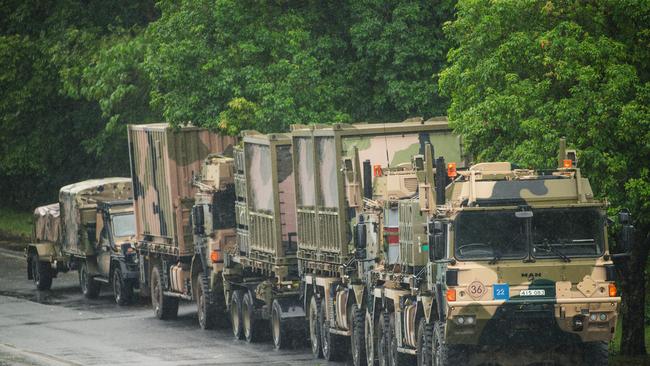
In just three years this town – 30km west of Ballina and a 45-minute drive southwest of Byron Bay – has perhaps more geographical, topographical and barometrically aware residents per square inch than anywhere in Australia. They know their environment here, how heavy rain and floodwaters move through their landscape, how water flows, shifts and surprises.
Tropical Cyclone Alfred discovered this time around, too, that Lismore – and its 43,907 residents – had grown tough exoskeletons.
The people here – once bitten, twice shy, and willing to do anything, including changing their mindset rather than suffer as they had done a few years earlier – were battle-hardened and ready to mobilise at the first signs of danger. And that’s exactly what they did.
Last week Jo and Rod of The Enchanted Florist in downtown Lismore were busy reassembling their shop in the wake of the cyclone. They had been here before. They knew what to do.
“We had a flood plan,” says Jo, who has run her business in Magellan Street for 18 years. “We started packing up last Tuesday and we were out by Wednesday night. We can’t afford to lose anything now.
“After 2022 we had no ceiling for two years.
“This time everyone completely stressed out. Last time we were unprepared. But this time we were ready. Everyone in the CBD got out. The town was empty. We were ready four days in advance.”
Around the corner at Mary J’s gift shop, Corey and Courtney Rimmer are restocking shelves. They had opened their business after the catastrophe of 2022 and remained hesitant, despite fitting out the store with easily removable metal and glass. No fuss. No mess.
“We live with an understanding that it’s a flood town,” Corey says.
“The people here are like none other. This time everyone knew not to screw around. People were stressed but we all got out quick.”
In Molesworth Street the enterprising folk at Be Seen Eyewear last week set up a desk on the footpath to keep business flowing and to deal with their customers’ needs as they moved shelves and stock back into the store from the rear of a delivery van.
Co-owner Bobby Bugden says there was no comparison between preparations for the 2022 flood and Alfred.
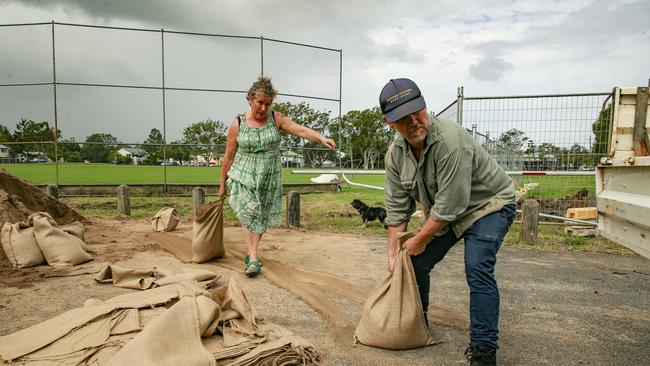
“The floods shocked everyone,” he says. “It was so quick. This time we knew what was coming. You’re going to lose income. That’s a reality. But we packed up Wednesday and we were out by Thursday. The mayor (Steve Krieg) made the decision to close the CBD on the Thursday and that forced people to make their own decisions so it was good.”
In fact, Krieg had been omnipresent, communicating to his community through Facebook pages, Instagram, national television, any way he could warn and placate and inform. It was this – a greater overall embracing of constant communication and chatter – that helped steer Lismore through Alfred.
Krieg echoed scout masters down through generations. Two words – be prepared.
“Everything was very clear this time around,” Bugden says. “We knew where we stood.”
Sign-writer and artist Stroud of Stroud de’ Signs shares a collective studio – The Outpost – with other artists just outside the Lismore CBD. It was submerged in 2022.
“The ways we built back (after 2022) is more flood mitigation, so using materials in shops that can withstand water,” she tells Inquirer. “This time we actually had a flood plan which we enacted early and I found that most people that had that were able to respond a lot better just because it takes the emotional thinking out of it. You know, you’re just like, ‘Oh, when the river gets to this height, this is what we do.’
“This time everyone was not willing to take the risk. Everyone had thought about how they would get out. Everyone kind of banded together and once we were packed up we went and helped some friends in low-lying areas and everyone just kind of pitched in to make sure everyone was safe.”
She says the government response to Cyclone Alfred was “a far cry” from the 2022 flood disaster. “It was a different government back then (the NSW premier was the Liberal Party’s Dominic Perrottet and the prime minister was the Liberal Party’s Scott Morrison) and I felt like they did not give a shit, pardon for that,” Stroud says.
“Last time I felt completely abandoned. I was in my roof cavity for six hours waiting to be rescued by boats that were never coming. I was rescued by a civilian on a jet ski. But this time, deploying the ADF and SES prior to the event, and also declaring a natural disaster, was hugely impactful, I thought, for psychological wellbeing because we felt looked after.”
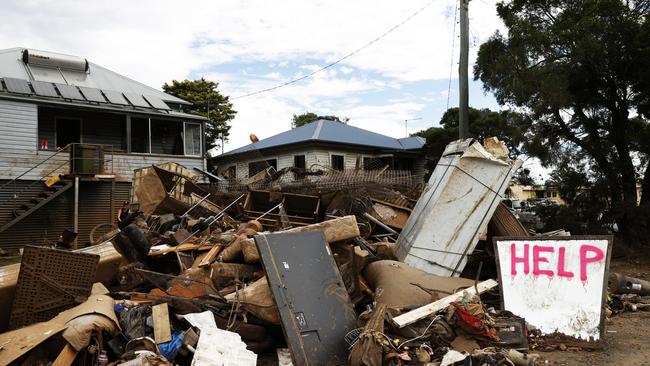
Stroud says communications from local authorities and the Bureau of Meteorology were superior. “There was a lot of talk with individuals saying like, why are they telling me to evacuate this area? Like we’re not in danger,” Stroud says.
“But from my perspective and what I kind of said to those responses is like, ‘yeah, right now you’re able to get out. They’re obviously giving this information because it could impact you.’
“It’s better that you can leave now with choice than to have to scramble when you don’t have any time. I feel like maybe they were a little bit overcautious with their warnings but, honestly, I would far prefer that than what happened last time.”
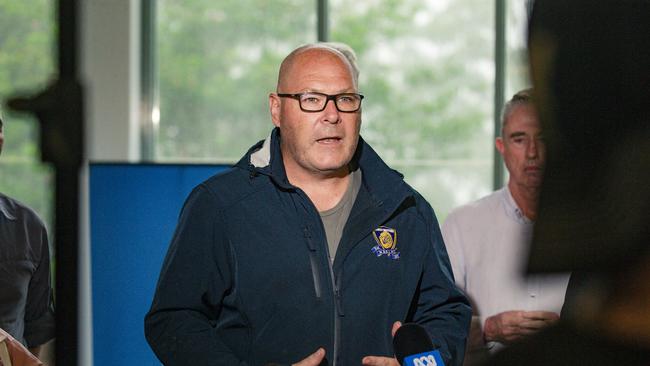
Mark Swivel, well-known northern NSW lawyer with Barefoot Law (and a member of the region’s famed “Russian” choir, Dustyesky, which has performed across the country, including at the Sydney Opera House), moved into his new home in Lismore just as Alfred was starting to come on to the radar.
“Lismore is a flood town and everyone knows about it, and it’s part of life, so what was really different was the more alert approach to the coming weather event,” he tells Inquirer.
“Maybe some of the media coverage was a bit overzealous but it’s very hard to manage these things … I mean, come on, it’s like a slow-moving disaster movie stretched out over 96 hours on ABC News, isn’t it?”
He says the response of our political leaders was admirable.
“The (NSW) Premier (Chris Minns), the Prime Minister (Anthony Albanese) and I think (Premier David) Crisafulli in Queensland did a pretty good job too at being present, visible, responsive, and they demonstrated in a way that leaders recently have not that they actually cared,” Swivel observes. “They performed it, they acted on it, they were proactive, they had all of the policy things lined up.
“It was almost as if they’d fallen out of a workshop where they’d had the riot act read to them about how hopeless the response was last time and they were going to do everything they could to do better, and guess what – they did.
“Good on you. Literally good on all of you.”
Down at the Comfort Inn Centrepoint Motel, manager and local farmer Luke Patch says he carefully studied weather patterns for days before the arrival of Alfred.
“Everyone was a bit gun-shy,” he says. “I’ve never been in a cyclone so I had no idea how much water it might dump on us.”
His motel became the proxy headquarters for the SES teams that awaited the onslaught of Alfred.
Three years. One monstrous flood. Then threat of a huge tropical cyclone. This time, the town dodged a bullet.
Why stay?
“I’ve been here all my life,” Patch says. And shrugs.
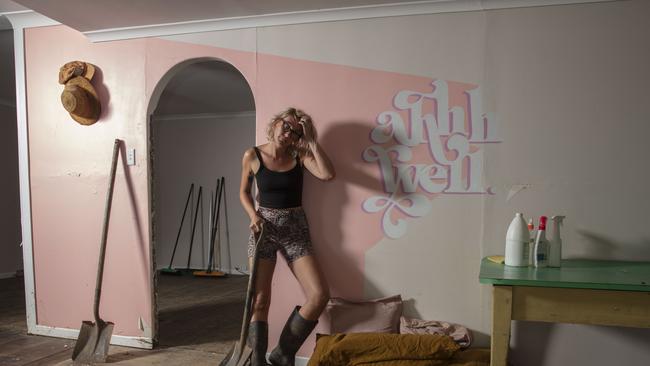
Down at Parliament House on Macquarie Street in Sydney, they sometimes call her The Flood Queen. Janelle Saffin has been the ALP member for Lismore since 2019 and is the Parliamentary Secretary for Disaster Recovery. She led her community through the 2022 flood catastrophe (thus the Flood Queen moniker, but mainly from the opposition bench) and she did it again in the past fortnight, tireless, ubiquitous, fearing for her constituents, covering every single base to ensure their safety.
Saffin has become, she agrees, something of a lightning rod for all things natural disaster.
This time on the cataclysm roundabout, however, things were very different.
“We had boots and boats everywhere,” she says. “We had the ADF, the SES, Marine Rescue, Surf Lifesaving, Fire and Rescue services … the pre-deployment was just superb.
“Look, the trauma (in this region) is palpable … so we were trying to show people we were better prepared than ever, that we were ready and were able to do this together and that was really an important message.
“My message to everyone was let’s be ready and go early.”
Did the swift preparations and easing of red tape come directly from Albanese’s office?
“I’m absolutely certain. Yes,” Saffin says.
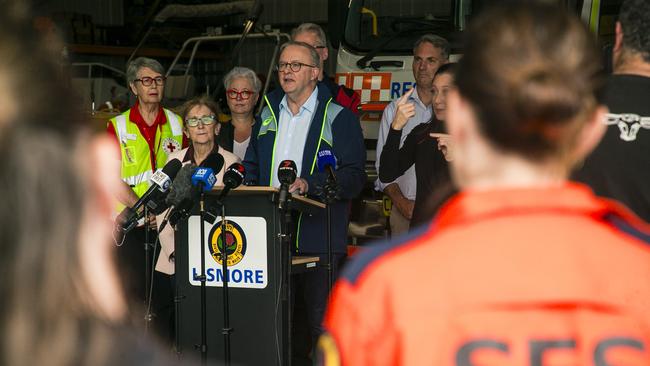
“Lessons learnt” from 2022 were triggered right across all levels of government. Regular SES briefings kept everyone in the loop, and updated information was rapidly passed on to local communities via social media platforms and other channels.
The result was a clear and timely dissemination of critical information, advice and, in many instances, firm orders: TAKE SHELTER. EVACUATE NOW.
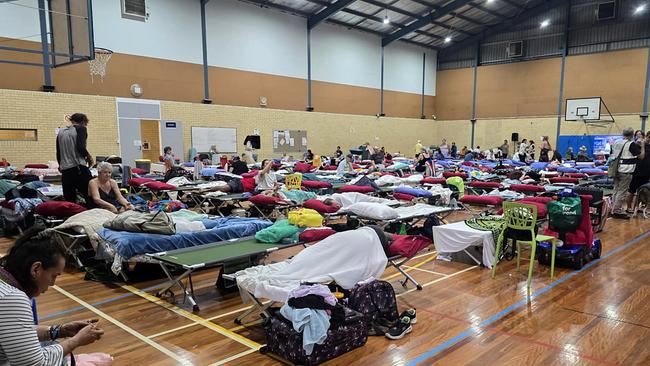
“This community, our community was wonderful,” Saffin says. “They were ready. They were prepared. And that makes a difference. And they heeded the calls, you know, they heeded the calls.
“Like one woman said to me, ‘Janelle, I’m contemplating. Should I go? Should I stay?’
“And I said, ‘If you’re feeling it, go. That’s it. That’s my rule of thumb. If you feel it.’
“Your family wants you safe and we all want you safe and I want the SES and all of them safe. So, you’ve got the evacuation order, please get ready.’
“And I said, I know how hard it is from personal experience because I have had to leave too, because I get flooded.
“You’re not just walking out of a house. You’re walking away from your home and you don’t know what’s going happen.”
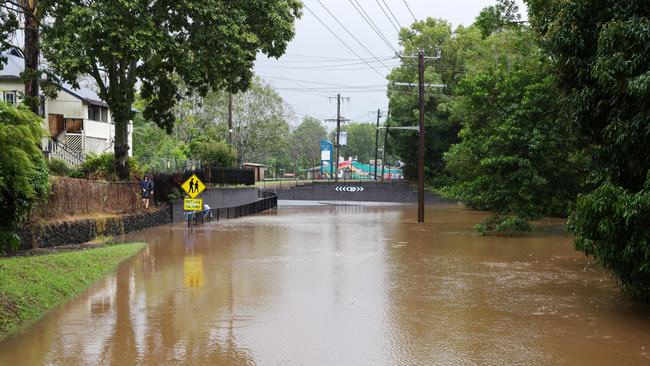
This time, though, the locals did have a much better idea about what was going to happen. And the experience may have given them a better idea about how to move forward into the future, here in the picturesque heart of an ancient volcano.
Artist Stroud: “We’re kind of living a very modular life on the flood plain now, meaning that everything is either flood proof or you can roll it out, it’s got wheels or it’s stackable and you can remove it quite quickly.
“You think: if there’s a flood, will that survive? Can I have that? No, that needs to go.
“I definitely put things through a different lens. Everything goes through a flood lens now.”






To join the conversation, please log in. Don't have an account? Register
Join the conversation, you are commenting as Logout